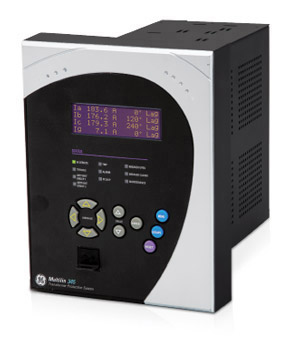GE MVME51005E Single Board Computer
Specification
Processor type and frequency: MPC7410 or MPC750 processors are available.
Model and Frequency: MPC7410 or MPC750 processors are available with internal clock frequencies of 400MHz or 500MHz for the MPC7410, 450MHz for the MPC750, and bus clocks of up to 100MHz for both processors.
Technical features: The MPC7410 integrates AltiVec™ technology for algorithm-intensive computing tasks, while the MPC750 is a low-power processor suitable for field applications where power consumption is critical.
Storage
On-board memory: The on-board EEPROM is 1MB and is programmable via two 32-pin PLCC/CLCC sockets. 16MB of surface mount Flash memory is also available.
Main memory: PC100 ECC SDRAM with on-board capacity ranging from 32MB to 512MB, expandable to a maximum of 1.5GB with the RAM500 memory mezzanine.
NVRAM: Equipped with 32KB of NVRAM, of which 4KB are free for user use.
Interfaces
Serial Ports: Two 16550-compatible asynchronous serial ports are provided, with COM1 interface connected via the front panel RJ45 connector and COM2 interface routed to the on-board 9-pin connector.
Ethernet ports: There are two Ethernet ports, one of which is fixedly routed to the front panel RJ45 connector, while the other can be flexibly configured via jumpers to be routed to either the front panel RJ45 connector or the P2 connector.
PMC slots: Two 32/64-bit PMC slots are provided to support front panel I/O and P2 rear I/O, which is convenient for expanding functions.
PCI Expansion: Equipped with a PCI expansion connector for connecting PMCSpan to further expand the system performance.
Physical Characteristics
Dimensions: Following the standard 6U VME specification, the height is 233.4mm (9.2 inches), the depth is up to 160mm (6.3 inches), the front panel height is 261.8mm (10.3 inches), the width is 19.8mm (0.8 inches), and the maximum component height is 14.8mm (0.8 inches).
component height of 14.8 mm (0.58 in.).
Electrical Performance
Power Requirements: When using the MVME761 Transition Module, current requirements vary by model at each voltage. Maximum current is between 3.0A and 4.7A at +5V, typical current is between 2.6A and 3.5A; typical current is 8.0mA at +12V; and typical current is 2.0mA at -12V.
Environmental Adaptability
Operating Temperature: Two operating temperature ranges are available, commercial and industrial. Commercial grade is 0°C to 55°C and industrial grade is -20°C to 71°C.
Humidity Range: The device will operate properly in environments with 5% to 90% relative humidity (non-condensing).
Safety Precautions
Emphasis is placed on safety precautions during operation, maintenance and repair of the equipment, such as grounding, avoiding operation in explosive environments, keeping away from live circuits, and proper handling of CRTs and lithium batteries, etc. Violation of these precautions may result in death or injury or damage to the equipment. At the same time, the equipment complies with relevant safety standards and regulations, such as CE certification, RoHS directives, and so on.
Product Overview
The MVME51005E is a high-performance VME single-board computer based on the PowerPlus II architecture, offering a wide range of processor choices and rich functional features such as optimised PCI interfaces and memory controllers, dual Ethernet ports, dual serial ports, a variety of storage configurations and flexible I/O modes, making it suitable for use in a wide range of fields such as military and industrial automation.
Hardware Installation
Prepare related equipment and pay attention to static electricity protection before installation. PMC or SBC mode can be selected by setting jumpers, and the jumper settings are different in different modes. The installation process includes installing PMC module, PMCspan module and mounting MVME5100 into VME chassis, with detailed instructions and precautions for each step.
Device Operation
Describes the functions of the switches, indicators, and connectors of the MVME5100, such as the ABT/RST switch for interrupt and reset, the indicators for system status, and the Ethernet and DEBUG ports for communication. It also describes the system power-up and initialisation process, and the role of the PPCBug firmware in this.
Functional Description
The features of MVME5100 are described in detail, including processor performance, multiple memory types, I/O interfaces, timers, interrupt routing and IDSEL routing. Its powerful processing capability and rich interface resources enable it to meet a variety of application requirements.
RAM500 Memory Expansion Module
The RAM500 module expands system memory with multiple capacity options and supports double-bit error detection and single-bit error correction. Its function, installation method and connector pin assignment are introduced to provide guidance for users to expand memory.
Programming Information
The memory mapping of MVME5100 is introduced, including the memory mapping of processor bus, PCI bus and VMEbus. Programming considerations such as PCI arbitration, interrupt handling, reset sources and byte order issues are also discussed to provide programming guidance for developers.









